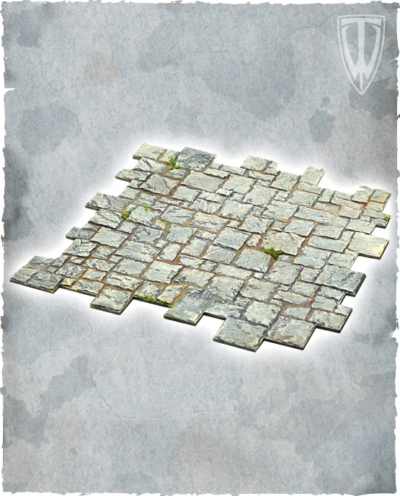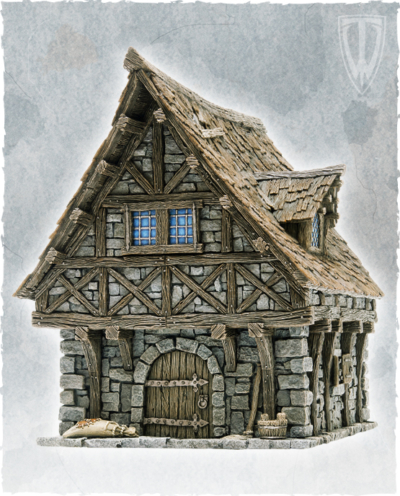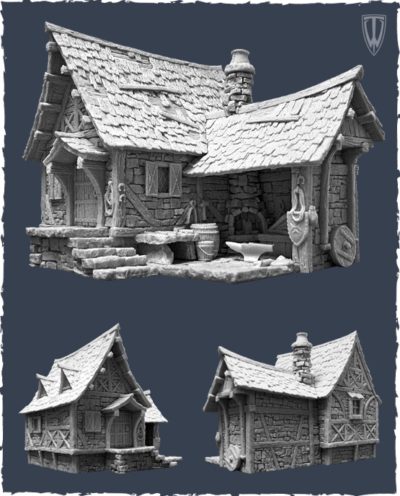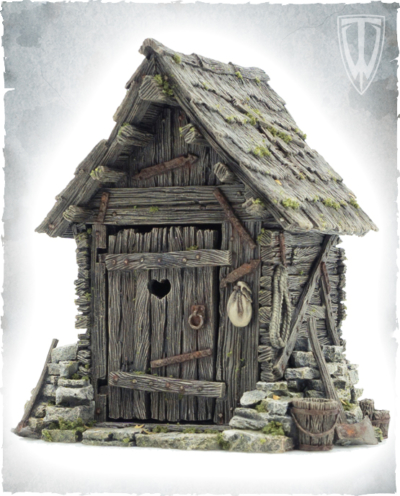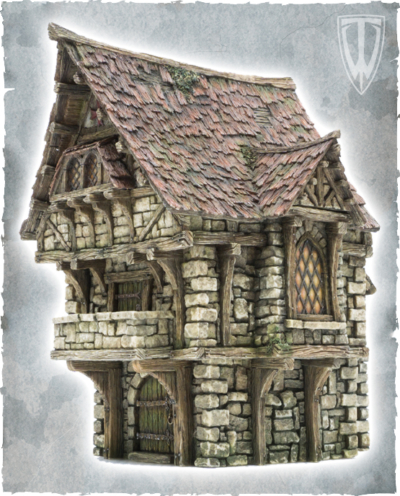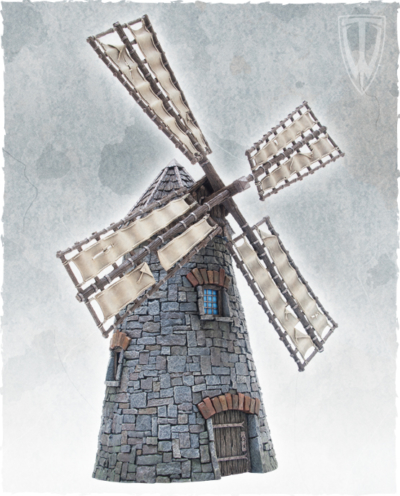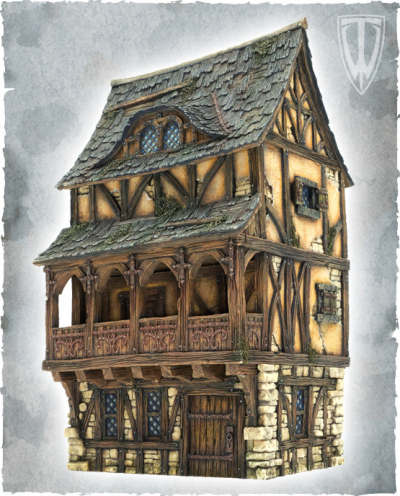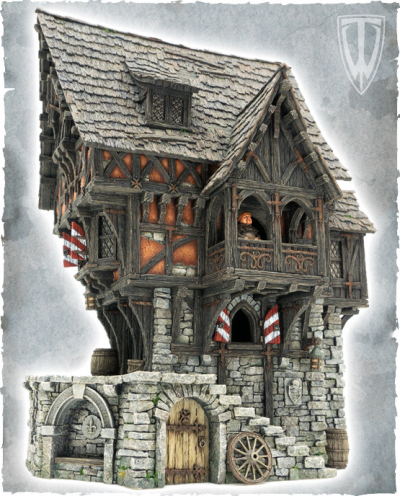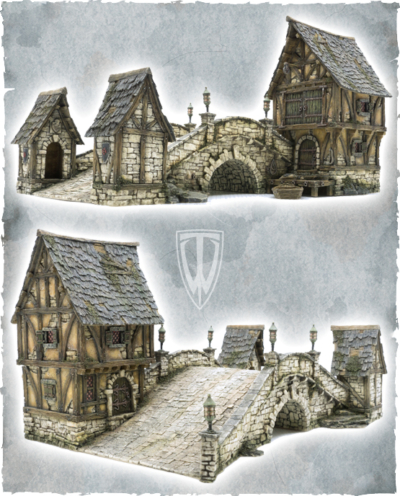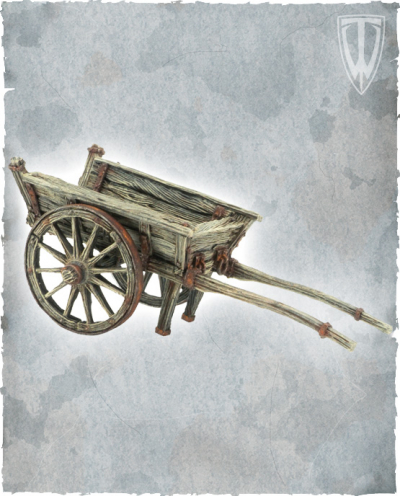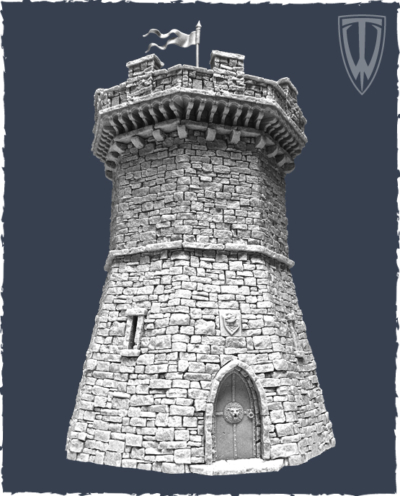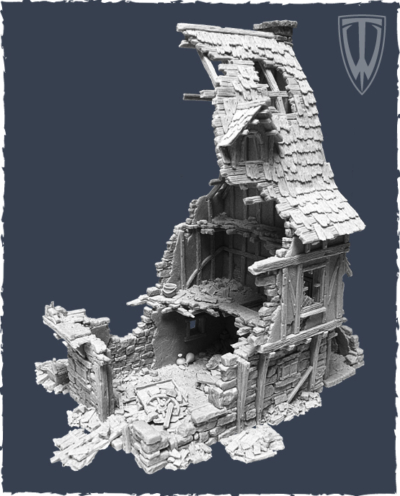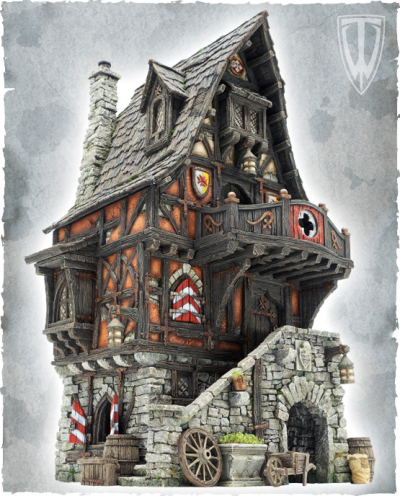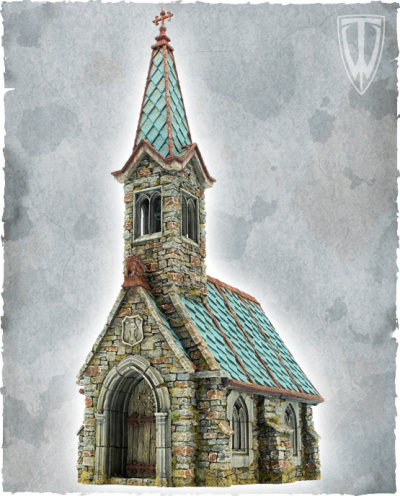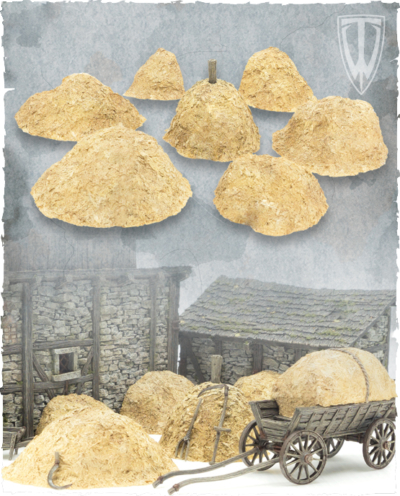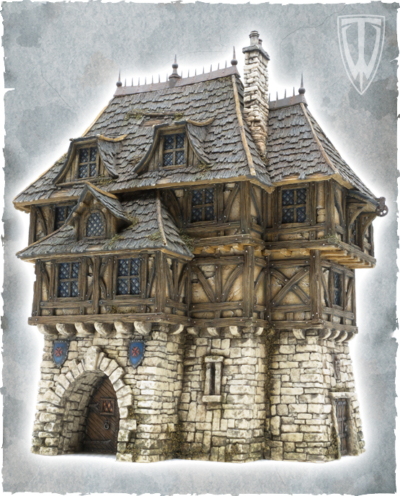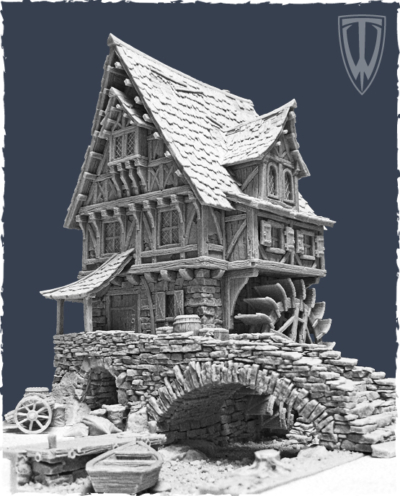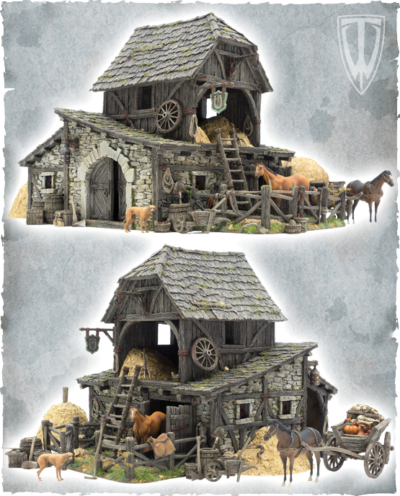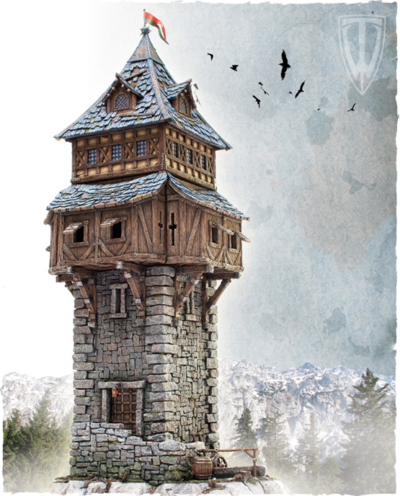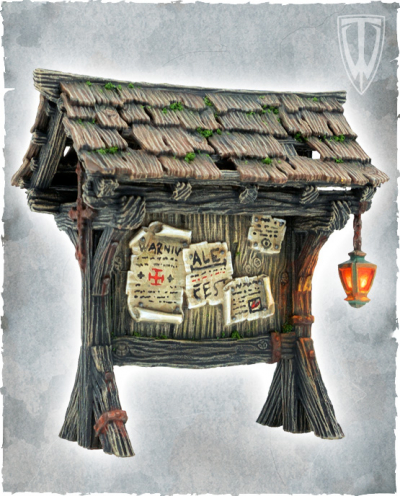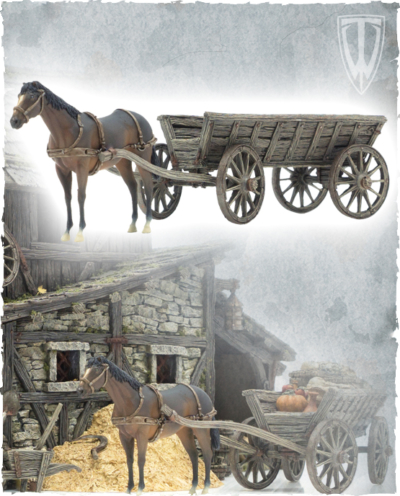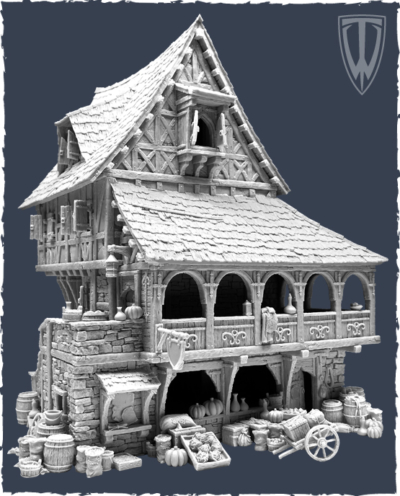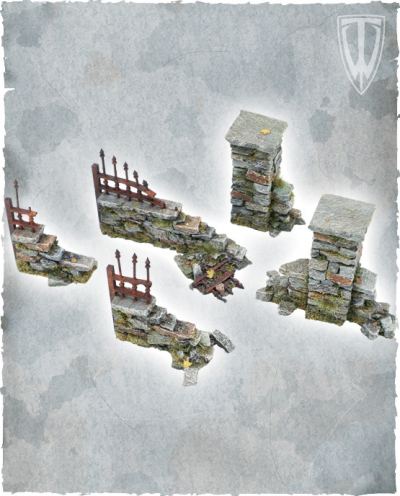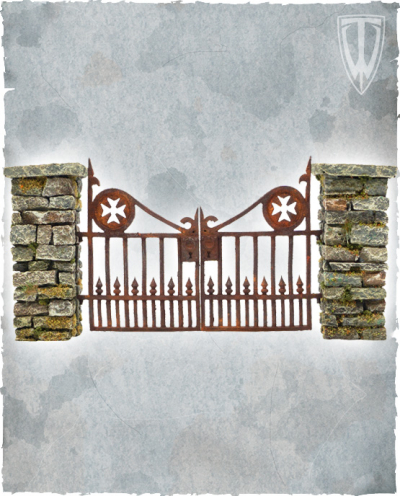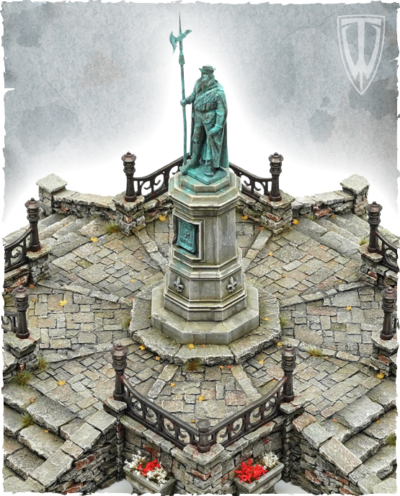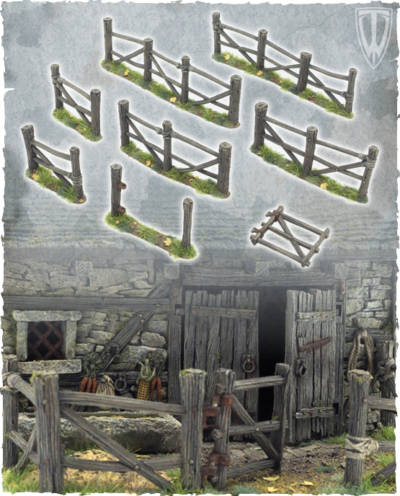-
Every medieval town has its main square and many roads paved in flagstone. Especially the marketplace.
-
There's only one place you can go to when your sword gets broken in a battle or when your horse needs a new pair of hues, and that place is Blacksmith’s Forge. The blacksmith is constantly working to patch up damaged armor plates and shields or to make new weapons and everyday tools. When you enter the town, you can hear him pounding with his hammer, making a truly powerful sound. Townsfolk are very proud to have a trustworthy and skillful blacksmith.
-
This luxurious house is where the town's well known merchant spends his days in peace and welfare. Townsfolk know him as a fair trader and a tolerant man who is always kind and ready to help people in trouble. In his shop, placed on the ground floor, you can find everything you need be it food, tools or even medicine.
-
Houses in the medieval towns reflected the rank of those living in them. Although stone building was encouraged, expense meant that most houses were built of wood. Those built of stone, were the homes of the rich people such as merchants and renown craftsmen.
-
The growing economy of the town called for a masonry tower mill. The tower mill was more expensive to build then the post mill, but more stable source of power was needed.In contrast to the post mill, only the cap of the tower mill needs to be turned into the wind, so the main structure can be made much taller, allowing the sails to be made longer, which enables them to provide useful work even in low winds.
-
Town Walls are a necessity for town to survive in medieval world of invasion and conquest. Wealthy towns are enclosed by protective walls and the only access to the town is regulated through Town Gate. Adding the section A together with section B will determine the length of the wall. You can use as many sections as you like. To avoid repetition we designed two versions of section A with slightly different textures and details.
-
Houses in the medieval towns reflected the rank of those living in them. Although stone building was encouraged, expense meant that most houses were built of wood. Those built of stone, were the homes of the rich people such as merchants and renown craftsmen.
-
Houses in the medieval towns reflected the rank of those living in them. Although stone building was encouraged, expense meant that most houses were built of wood. Those built of stone, were the homes of the rich people such as merchants and renown craftsmen.
-
There is no complete communication system without a bridge. Laying foundations for this beautiful arched bridge where the river flows all year round was not an easy task, but the town's masons managed to built it proving them selves to be skillful engineers.
-
Many Londoners from the 1665, the Black Plague period would remember a lot of these roaming around the city. Bring out the dead! The undertaker would yell, while moving the corpses to the outskirts of the city to be buried in nameless graves.
-
Medieval towers were defensive structures usually made of stone. Often they included battlements and arrow loops. Arrow loops were vertical slits in the wall where archers from the inside shot arrows through at the attackers, but made it extremely difficult for attackers to get many arrows back through at the defenders. A Battlement comprises a defensive low wall between chest-height and head-height, in which rectangular gaps or indentations occur at intervals to allow for the discharge of arrows or other missiles from within the defences. Towers can be stand alone structures or parts of defensive walls.
-
Available until April 30 or until out of stock!
Ruined Townhouse
In times of war medieval towns were the central focus of armed conflict and would often be sacked and ruined in defeat. War, depopulation and disease lead to ruined structures. These buildings were becoming progressively derelict over time due to weathering and scavenging. -
Houses in the medieval towns reflected the rank of those living in them. Although stone building was encouraged, expense meant that most houses were built of wood. Those built of stone, were the homes of the rich people such as merchants and renown craftsmen.
-
Town Walls are a necessity for town to survive in medieval world of invasion and conquest. Wealthy towns are enclosed by protective walls and the only access to the town is regulated through Town Gate. Adding the section A together with section B will determine the length of the wall. You can use as many sections as you like. To avoid repetition we designed two versions of section A with slightly different textures and details. Note that the section B is always connected to section A or ending sections E and F.
-
If you need to create a rural setting on your battle field these hay stacks are a perfect. Some are made in a way to fit in the corner or next to a wall.
-
Noble Townhouse represents the city or town residence of a noble or wealthy family. Townhouses of the rich are bigger in size and more elaborate than those of regular townsfolk. By their residence nobles prevented the town from becoming merely a trading centre or an aggregate of merchants. They kept the citizens in touch with the rest of the kingdom. They made the people understand that they belong to their Realm.
-
Horses are expensive working animals, used for transport, communication, and battle as well as a statement of status. Every farm has its own horse and it is considered as a valuable commodity. This is why stables are complementary to the house, or built as close as possible to it. Their quality had to be better than other farm buildings, as keeping their horse in prime condition was vital to the economy of the household.
-
In dark medieval times, every city had to defend itself. Buildings like Guard Tower enable soldiers to spot the enemy on time in order to make all necessary actions to properly prepare the city for attack. When the soldiers on the Guard Tower sound the alarm, town gates are being sealed and all who can fight equip themselves with weapons and readily await the battle to commence. Guard towers are built on the outskirts of a city, preferably on higher ground. These buildings have to be sturdy enough to withstand enemy’s cannon balls, stones thrown by catapults or even attacks by frenzied monsters such as Giants and Treeman. It has to be high enough so soldiers are able to see as much landscape as possible. Sometimes whole regiments of archers and other troops are stationed in one Guard Tower.
-
If you want to inform the townsfolk of a dangerous dragon or simply inform them of a good deal in the local brewery, your town needs a Notice Board.
-
This luxurious house is where the town’s well known merchant spends his days in peace and welfare. Townsfolk know him as a fair trader and a tolerant man who is always kind and ready to help people in trouble. In his shop, placed on the ground floor, you can find everything you need be it food, tools or even medicine.
-
Ruined walls are perfect to make additional access points to your graveyard, or any other feature that is enclosed in walls and fences. They will also make your setting visually more interesting. You can combine them in various ways and use them as a part of Walls & Fences system. The possibilities are endless!
-
If you are making a smaller Graveyard and need an entrance that is not so grandiose, Small Gates are a perfect solution! Also, if your Graveyard is big in size, Small Gates are ideal for adding the secondary entrance in the back or the sides. The doors are hinged and fully functional.
-
Each civilization has its heroes, kings, warlords and many other great individuals who leave their mark in its history. What better way to commemorate them than to carve their name and story into stone and bronze. Monuments are built to stand firm and keep the memory of a fallen hero for generations.

